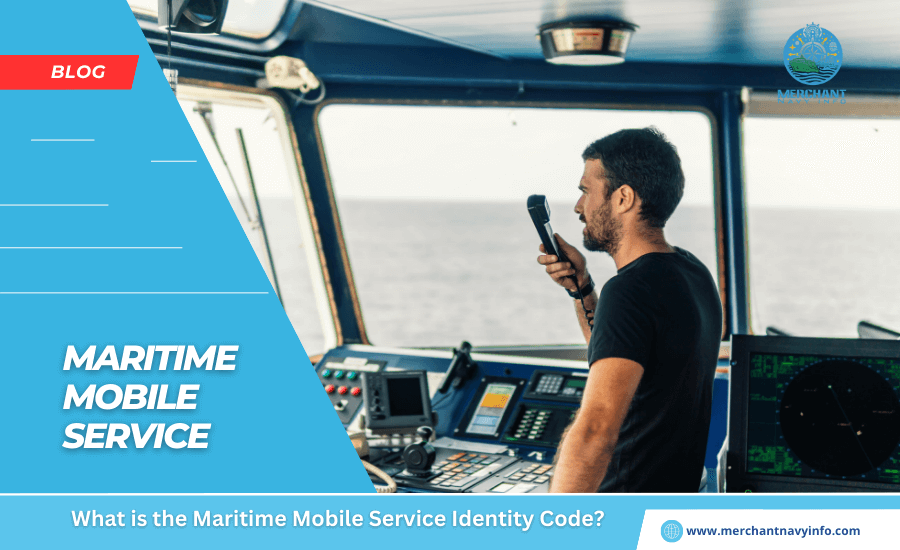
Communication is probably the most important aspect of the maritime industry. Ships need to be able to communicate with each other when carrying out missions. For things to go smoothly, it’s important to have an effective communication system. This is why the maritime industry introduced the MMSI code.
It stands for the Maritime Mobile Service Identity code. It’s crucial for maintaining contact between vessels on the high seas. The International Telecommunication Union is to thank for the introduction of this code. So without further ado, let’s get right into what makes this innovation a godsend for the maritime industry.
Introduction to the MMSI code:

While it may seem difficult to understand, it’s not that hard of a concept to grasp. The MMSI code is a unique code assigned to every ship in the merchant navy. It’s like how people have a unique social security number. It helps identify them in the system. Similarly, the maritime industry introduced the MMSI code which allows all ships to be identified.
Each ship has a unique MMSI code. This allows control centers to identify different ships when handing out instructions. Sometimes the control center needs to share classified information with specific navy vessels. In these situations, the MMSI code comes in handy and allows a secure transfer of data.
Origin and evolution of MMSI:
The MMSI code didn’t just pop up out of nowhere. It was first introduced way back by the International Telecommunication Union. Essentially, they introduced a range of numbers specific to the maritime industry. These numbers were then used to identify each vessel in the industry.
For a time this worked out pretty well. However, like always, the world has a way of progressing forward. Technological advancements were imminent. Eventually, there came a time when it was clear that a proper system was needed. This is when the MMSI code was born. Thankfully, it’s being used to great success to this day.
Structure and composition of MMSI:
Thanks to a set of guidelines, we can understand what makes an MMSI code so unique. It’s a set of 9 digits that are arranged in a specific order. This order is important because it allows us to garner information about the vessel in question. There are three main components of the MMSI code, which includes:
- The first three digits of the code are used to denote whichever country the vessel represents. The digits help to identify the vessel’s state and the flag that it carries.
- The next three digits are known to be the ship’s unique identification number. These are the most important parts of the code. These are unique to every single ship that is commissioned out into the ocean.
- The final three digits are used to represent whatever work the vessel is used for. This helps us to understand what the purpose of a specific ship is. It could be used for auxiliary services, group calls, or a myriad of other purposes.
Applications of MMSI:
- Vessel tracking and monitoring: Traffic authorities use MMSI codes to keep an eye on any vessels that are out on the seas. They track the ship’s movements and ensure that it is complying with its mission requirements. They also track traffic patterns and ensure that the ship is complying with industry standards.
- Distress alerting and search and rescue operations: This code comes in very handy during any emergencies that might occur out at sea. There might be issues such as a man going overboard. Thanks to the MMSI code, authorities can locate the distressed vessel with ease. This allows them to carry out rescue operations with ease.
- Collision avoidance and navigation: Thanks to MMSI codes, authorities can monitor traffic patterns for the vessels. This allows them to monitor whenever two or more vessels might be nearby. If they are in danger of collision, they can alert the vessels to avoid accidents.
- Port entry and clearance procedures: MMSI codes also help port operations go smoothly. They ensure authorities can identify vessels and their purpose with ease. This allows for a smooth workflow and reduces any chances of error while loading or unloading vessels.
- Communication and coordination: MMSI codes are also able to foster good communication between authorities and vessels. Not only that, it allows different vessels to interact with each other on secure channels. This further allows for a way to safely exchange classified information.
Best practices for MMSI implementation:

- Accurate registration and assignment: Vessel owners must be prepared to register their vessels via the proper authorities. This will ensure that all vessels comply with industry regulations. It’s important so that port authorities can keep all incoming vessels in check.
- Regular testing and maintenance: It’s important to carry out regular testing of communication systems. This helps to maintain their integrity and ensure that they will not fail at crucial times. It’s essential to make sure that everything is up to date and ready to go at a moment’s notice.
- Global compliance and standards: It’s important to ensure that everything is up to international standards. This helps to ensure smooth workflow when it comes to global trade. This also helps to ensure that everyone is on the same page. Standards set by the International Maritime Organisation and ITU are of paramount importance,
Outro:
There you have it folks. That was a deep dive into what the maritime mobile service code is all about. As we’ve already mentioned, it’s a unique set of numbers that helps to identify specific vessels. It’s important to be used since it helps to avoid confusion while vessels are docking at new ports. It also helps to ensure smooth workflow at ports.
MMSI codes help to ensure safety and efficiency when it comes to safety protocols. It’s important to have everyone in the maritime industry on the same page. This allows different countries to interact with each other in an efficient manner.









